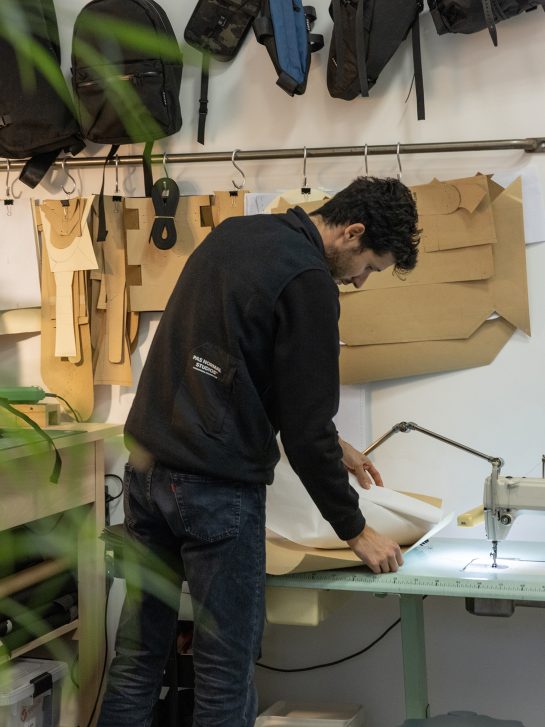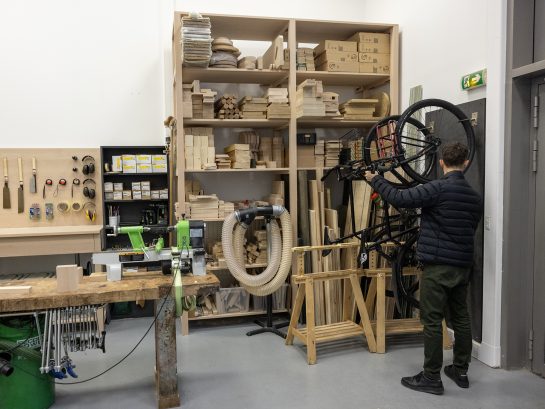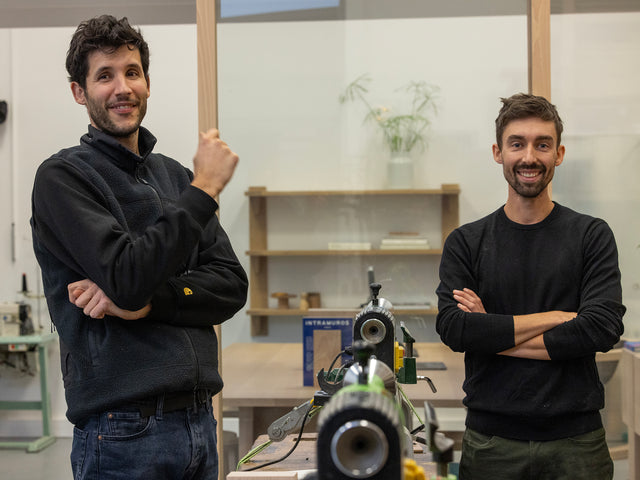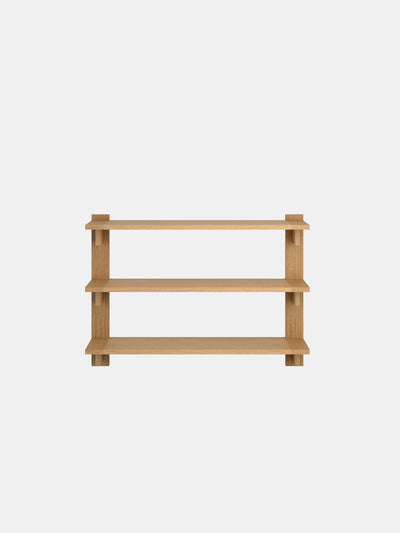
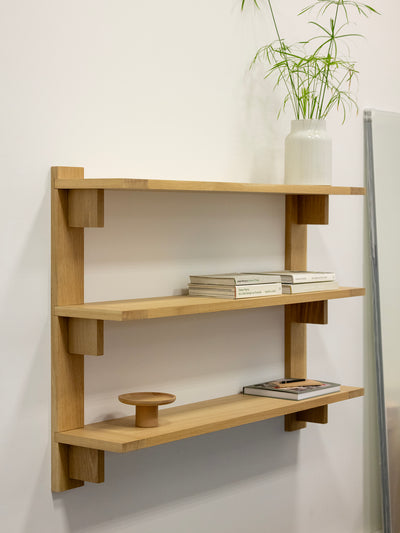
Interview by Charlotte Imbault
While Formel Studio designed the new Plan collection for Kann, which includes a set of several wall shelves, a visit to their studio in the 19th arrondissement of Paris to better understand the inner workings of their studio is a must. The studio, founded four years ago by Timothée Concaret, an industrial designer, and Nicolas Mérigout, a craftsman-designer, is constantly moving back and forth between design and production.
How does the duo work?
We try to do everything together: design and manufacture, even though one trained in cabinetmaking and space design, and the other in product design and architecture. What we like about our drawing is that we can design objects that are immediately feasible, without taking the easy way out, because we like to push the limits of materials. When we design for a publishing house like Kann, we also have the eye of a manufacturer, which enables us both to propose a design that won't lead to a profligacy of means, and to anticipate rational manufacturing. For example, for the Plan collection, our craftsman's eye settled on a board width of 120 millimetres, as this is the width that enables a board to be solid planked without gluing: by avoiding gluing, we ensure less labor and better stability of the furniture.
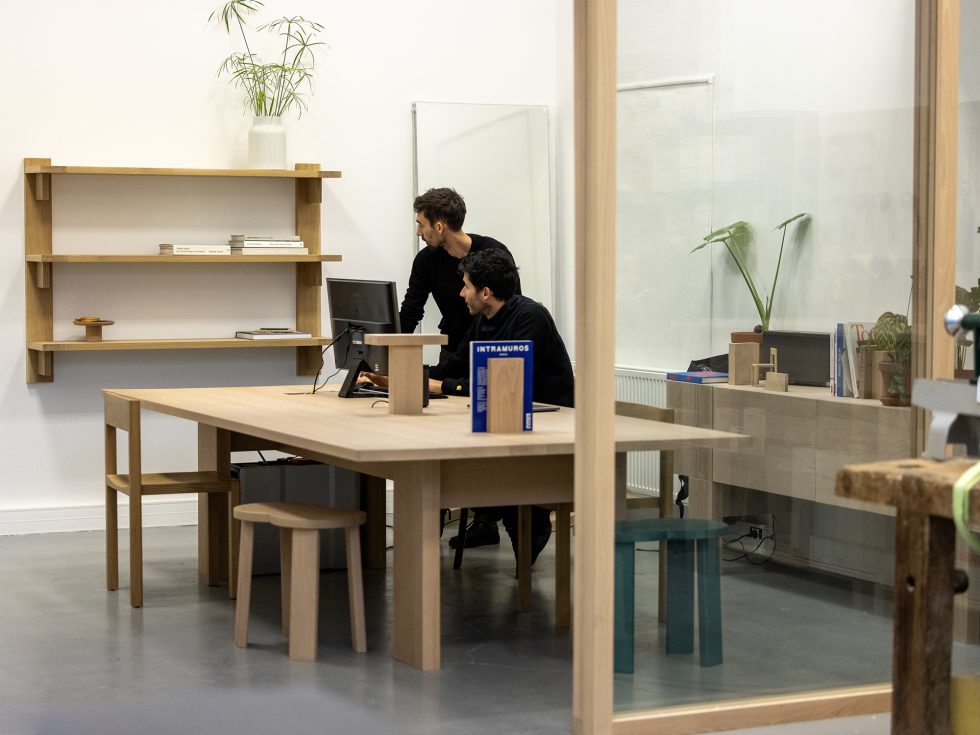
As Kann is a manufacturer, how did you work together?
We played the game to the hilt, going no further than drawing in the creative process. We drew inspiration from their world while keeping our own. Kann then produced the prototypes and the entire manufacturing process, with all the expertise we've come to expect from them. The reason we wanted to design for Kann is that we really appreciate their artistic line and the care they take with minimal fiber. When we met Meghedi and Houssam, it was an instant fit, and it's a great satisfaction to be able to work on this scale of distribution while remaining part of a family publishing house.
What shapes inspire you?
It's the function of the object that inspires us. On all our pieces, we aim to get to the essence of a form. We're influenced by Japanese design, which is based on two principles: functionality and multi-functionality. We want to be able to find in the shape of an object, its utility without frills or arabesques. We're very attracted to the brutalist side of a material like wood. For the Plan collection, we focus on details such as the thread crossings that reveal the wood fiber along the length of the tree.
Why is wood your material of choice?
Nicolas' great-grandfather was a carpenter. He fell into it as a child. In fact, the workshop's workbench is a family heirloom. Wood is an ancestral material that has always been there for mankind and continues to be with us today. Wood is both familiar and unique: each piece has its own specific pattern. It's an extremely beautiful material to work with, warm and demanding. If you understand it and listen to it, it can even become malleable. We work mainly with species found in France: oak, ash and beech. Personally, we prefer beech, because it's a wood that's easy to work with, resistant and accessible. For the Plan collection manufactured by Kann, we used oak, their signature wood, with its more pronounced grain and softer, creamier color.
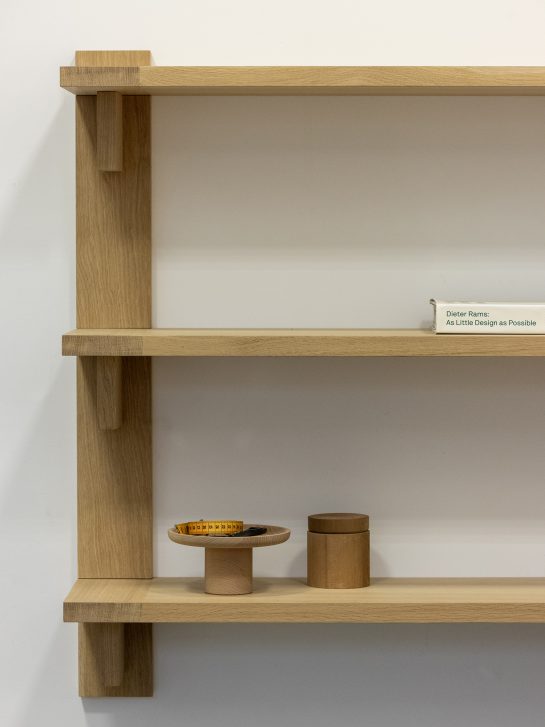
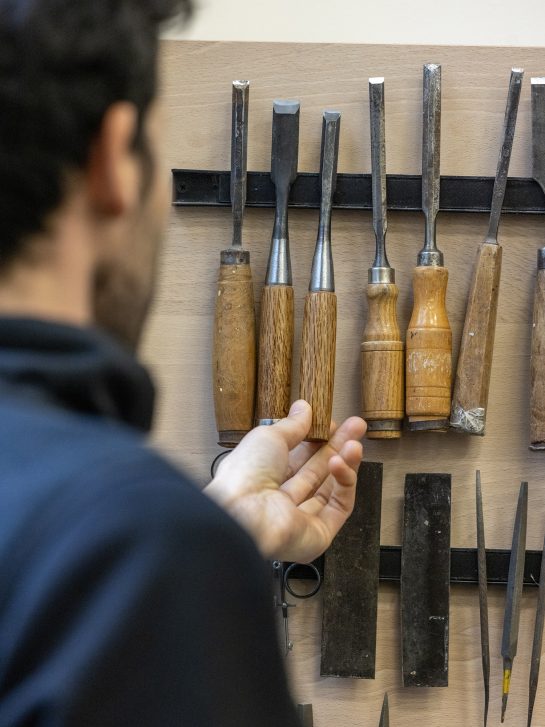
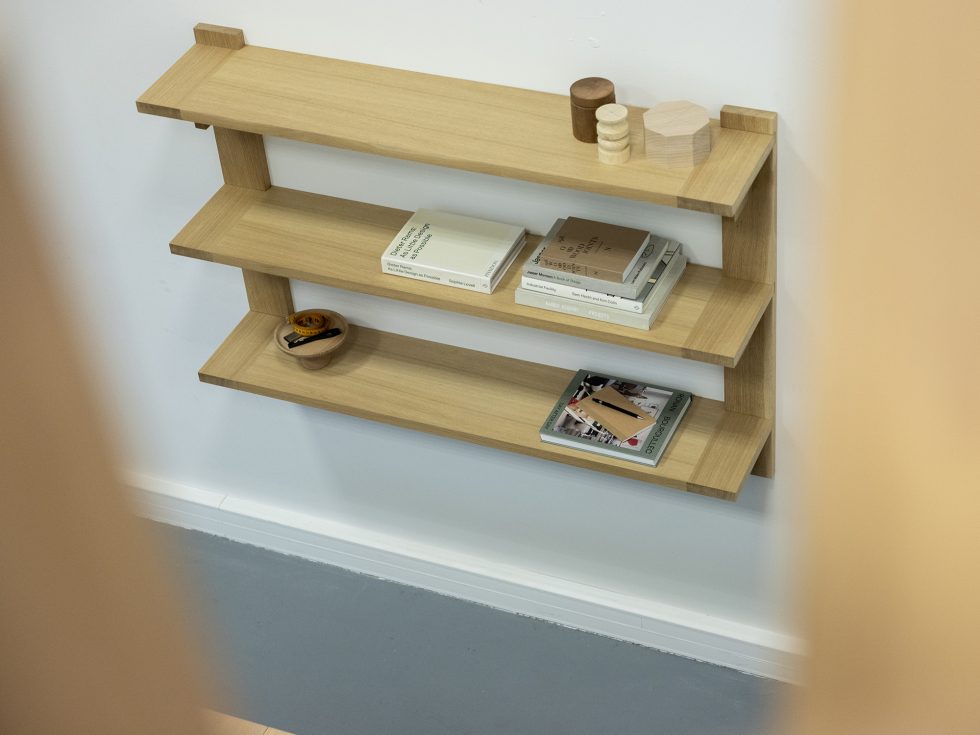
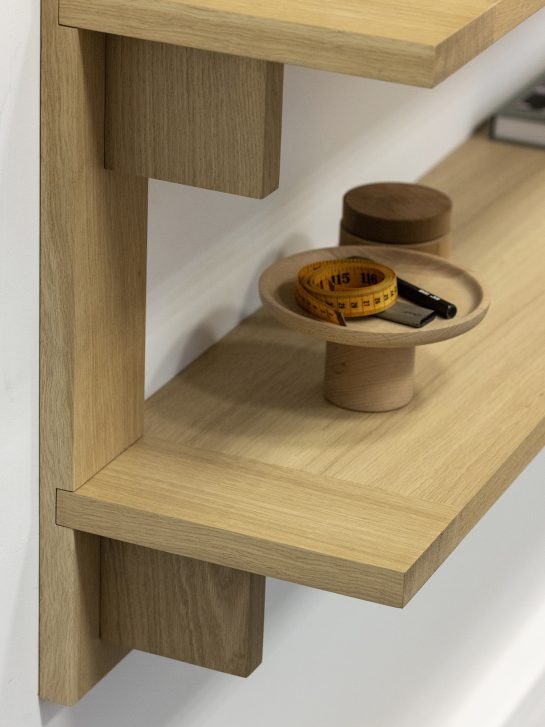
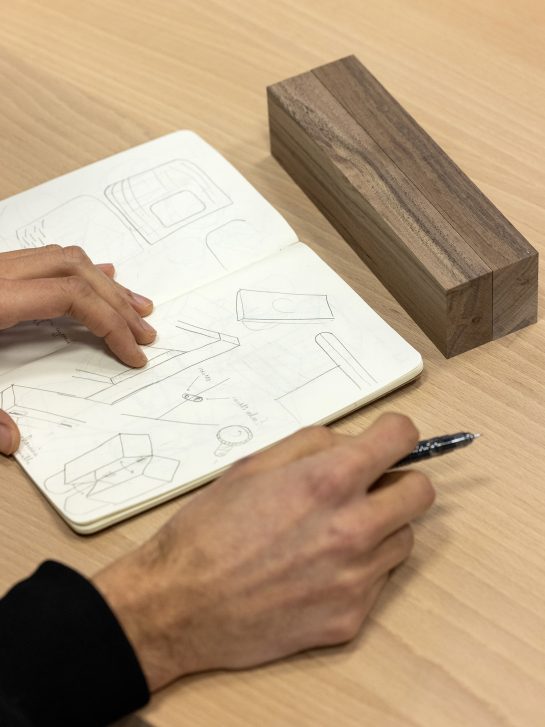
Plan shelves are unique in that they are wall-mounted. How did this choice come about?
For practicality and to save space. We also decided to design them open, to increase their functionality: the shelves can be used to store but also to display objects. There's something architectural about their presence: free-standing, isolated from the floor, they stand out like a frame. Each shelf also contains a serial aspect, inviting repetition with a pattern of proportions that can be extended at either top or bottom.
In your workshop, we can see an area dedicated to the manufacture of bicycle panniers. What's your connection with the studio?
Timothée has been running this project in parallel for several years. He has created his own brand: Copra. With luggage, the scale is different from the furniture we design, but the questions and constraints are the same. And sometimes the frontier is blurred: it was while working with hypalon, an extremely resistant and tear-proof fabric, reminiscent of leather in the way it folds, that this same material was used for the "mungo" armchair-transat, one of our latest experiments.
